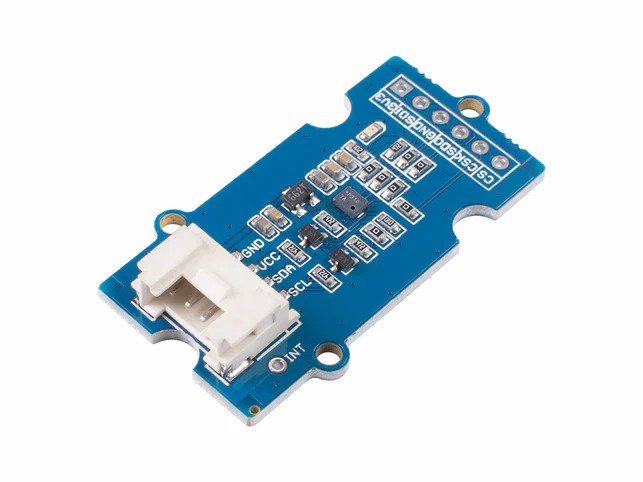
Drones have transformed the way we see and interact with the world.
From aerial photography and surveillance to agriculture and search-and-rescue missions, these unmanned aircraft have found applications in various fields.
One key factor driving the innovation in drone technology is the use of microcontrollers like Arduino.

In this post, we’ll explore how Arduino is making its mark in the world of drones, highlighting the universality of coding and add-ons needed for controlled flight, and the immense innovation potential this combination offers.
Arduino: The Universal Micro-controller
Arduino, an open-source electronics platform based on easy-to-use hardware and software, has revolutionized the world of embedded systems.
Its versatility makes it a perfect choice for drone enthusiasts and professionals alike. Here’s why Arduino stands out as a universal microcontroller for drones:
1. Accessibility: Arduino boards are readily available and affordable, making them accessible to hobbyists, students, and professionals. This democratizes the field and encourages more people to explore drone technology.
2. User-Friendly IDE: Arduino’s integrated development environment (IDE) simplifies programming for both beginners and experts. The IDE offers a vast library of pre-written code, making it easier to build and modify drone projects.

3. Community Support: Arduino has a thriving online community where users share knowledge, code, and troubleshooting tips. This vast resource pool ensures that you’re never alone when working on your drone project.
Resources for Arduino Knowledge
Universal Coding for Drones
One of the key advantages of using Arduino in drones is the universal coding approach.
The same principles of programming and coding that you learn for one drone project can often be applied to others. Here’s how Arduino promotes universality in coding for drones:
1. Standardized Code: Many drone-related libraries and code snippets are available for Arduino. These can be used as a foundation for various drone projects, saving time and effort when starting a new endeavor.
2. Modular Design: Arduino allows you to break down your drone project into smaller, modular components. You can create reusable code modules for tasks like motor control, sensor integration, and flight stabilization. These modules can be easily adapted for different drone designs.
3. Scalability: As your skills and ambitions grow, Arduino makes it easy to scale up your drone projects. You can start with a basic drone and gradually add features like GPS, advanced sensors, and even autonomous flight capabilities—all while using the same coding principles.
Add-Ons for Controlled Flight
Controlling a drone effectively requires various sensors, peripherals, and add-ons.
Arduino seamlessly integrates with these components, enabling you to build a fully customized drone with precise control.
Here are some essential add-ons for controlled flight:
1. IMU (Inertial Measurement Unit): IMUs, including accelerometers and gyroscopes, provide data for stabilizing your drone. Arduino boards can process this data to ensure stable flight even in challenging conditions.

2. GPS Module: Arduino-compatible GPS modules enable you to add location-based features like waypoint navigation and geofencing to your drone project.

3. Remote Control: Building a custom remote control using Arduino allows you to design a user-friendly interface for your drone, with options for real-time monitoring and adjustments.

4. Telemetry Systems: Arduino can be used to create telemetry systems that transmit important data from the drone to a ground station, enhancing situational awareness during flight.
An example of this would be a barometric sensor to add to your drone for environmental sensing or altitude measuring!

Unlocking Innovation
The combination of Arduino and drones opens up a world of innovation possibilities:
1. Autonomous Flight: With Arduino’s coding capabilities and sensor integration, you can create drones that navigate autonomously, making decisions based on sensor data and GPS coordinates.
2. Environmental Monitoring: Arduino-equipped drones can monitor environmental conditions, collecting data on air quality, temperature, humidity, and more, for research and environmental conservation efforts.
3. Agriculture: Drones with Arduino-based systems are used in precision agriculture, enabling farmers to monitor crops and optimize resource usage.
4. Humanitarian Aid: In disaster relief, Arduino-powered drones can be deployed for rapid assessments, search-and-rescue missions, and supply drops to inaccessible areas.
Conclusion
Arduino’s universality in coding and adaptability to various add-ons make it a powerful tool for drone enthusiasts and professionals.
Whether you’re a beginner looking to build your first drone or an experienced developer aiming for innovative applications, Arduino offers a flexible platform that encourages creativity and exploration.
The fusion of microcontroller technology and drone capabilities is a testament to human ingenuity and our ability to push the boundaries of what’s possible in the world of unmanned flight.
So, let your imagination soar and unlock the endless possibilities of Arduino-powered drones!
Be sure to subscribe below to the Electrified Life newsletter for the latest articles on projects and ways that you too can work from home as a blogger!
We won’t send you spam. Unsubscribe at any time
